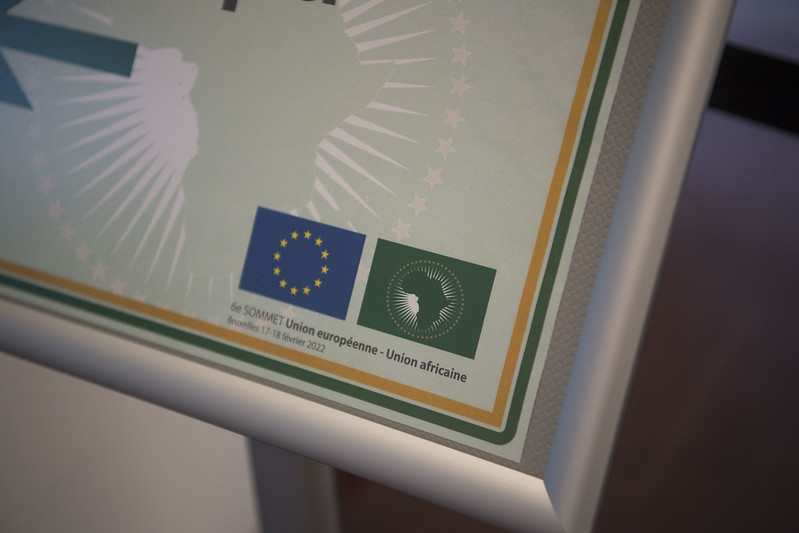This blog is part of a series by CGD ahead of the EU-Africa Summit which will begin on 17th February 2022. This series presents proposals for priorities, and commentary on whether a meaningful reconstruction of the relationship between the two continents is likely.
Last week, we published a paper on trends in public-private financing for infrastructure in sub-Saharan Africa from 2007 to 2020. In particular, we examined—six years after the announcement of the “billions to trillions” vision—to what extent development finance institutions (DFIs) and multilateral development banks (MDBs) had successfully boosted their own contribution to infrastructure finance in the region and “crowded in” private finance.
You should read the full summary of our findings, but the gist is: we found no sustained upward trends in overall sub-Saharan African public-private infrastructure finance volumes, MDB finance, private finance, the share or volume of local private finance, participation by international institutional investors, or finance from bilateral DFIs.
In addition:
- Chinese DFIs dominated transactions with private participation, providing $23 billion cumulatively over the period.
- Finance from all European DFIs combined, including the European Investment Bank (EIB), totaled about a third of that, $7.8 billion over the period.
- Total MDB finance for such transactions averaged only $1.4 b per year from 2016-2020—a small increase from a very low base in earlier years.
- Average annual total private finance fell to $3.7 b in 2016-2020, from $5.1 b in the earlier years of the period.
- Among MDBs, the African Development Bank (AfDB) is the largest source of finance over the period, likely a surprise to some who would have expected the World Bank’s IFC or IDA to rank first.
- And finance from foreign private banks exceeded that from local private banks or local institutional investors.
This record makes the need for coordinated EU action obvious. It is the developed region best placed to support private finance mobilization at scale in sub-Saharan Africa. Its bilateral DFIs, large regional MDB (EIB), and strong voice and vote in the AfDB offer unique advantages. An EU decision to support public private infrastructure investment in sub-Saharan Africa as a priority in all of these institutions would bring major financial firepower behind the effort.
A key decision in this regard lies just ahead. Replenishment discussions for the African Development Fund (ADF), the concessional window of the African Development Bank, have just begun. EU donors accounted for 46 percent of donor commitments in the last ADF replenishment. ADF has suffered in recent years from tight financial constraints, which drove a 24 percent decline in commitments in 2020, despite urgent pandemic-related countercyclical needs. It is increasingly overshadowed by IDA, the World Bank’s concessional window. But IDA has moved away from a focus on infrastructure.
Fortunately, the data in this study show that the AfDB punches above its weight in public-private finance for infrastructure. Concessional funding from the ADF can offer critical support for the rest of the African Development Bank in a region where many countries struggle with high sovereign indebtedness, limited fiscal space, and problematic investment environments for infrastructure. The ADF can augment financing available for the public side of public private infrastructure transactions. It can share risk through its Private Sector Credit Enhancement Facility in ways that make more public private transactions viable. And it can support the kinds of policy, regulatory, and institutional reforms that strengthen critical elements of the investment climate.
EU donors to ADF have the opportunity to lead through their contribution decisions, to substantially increase its size, and to spur the United States, Canada, and Japan to boost their commitments as well. With such a bold approach, EU donors would also be in a strong position to shape the ADF’s focus and priorities. And they could build greater mutually beneficial partnerships between their own DFIs and the AfDB group. The Global Gateway window, under the European Fund for Sustainable Development Plus (EFSD+), offers a unique opportunity for co-investments in infrastructure between European DFIs and the AfDB, as well as other MDBs.
European governments need to act, not just criticize the China model. If they want to boost productive and sustainable infrastructure investments in sub-Saharan Africa to meaningful levels, they need to deploy their own development banks and adequately resource the multilateral development bank that serves the region, including its critical concessional window.
CGD blog posts reflect the views of the authors, drawing on prior research and experience in their areas of expertise.
CGD is a nonpartisan, independent organization and does not take institutional positions.







